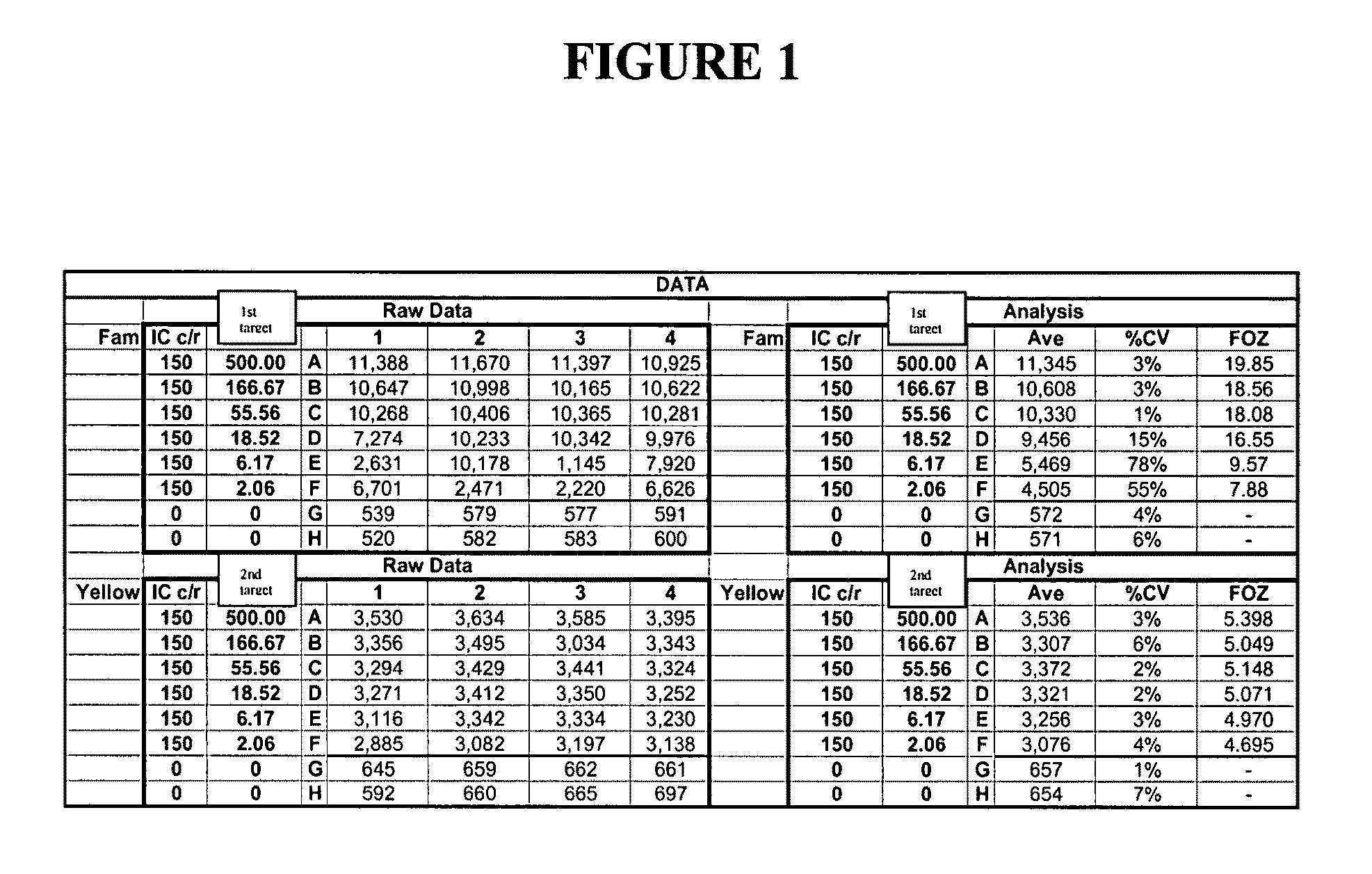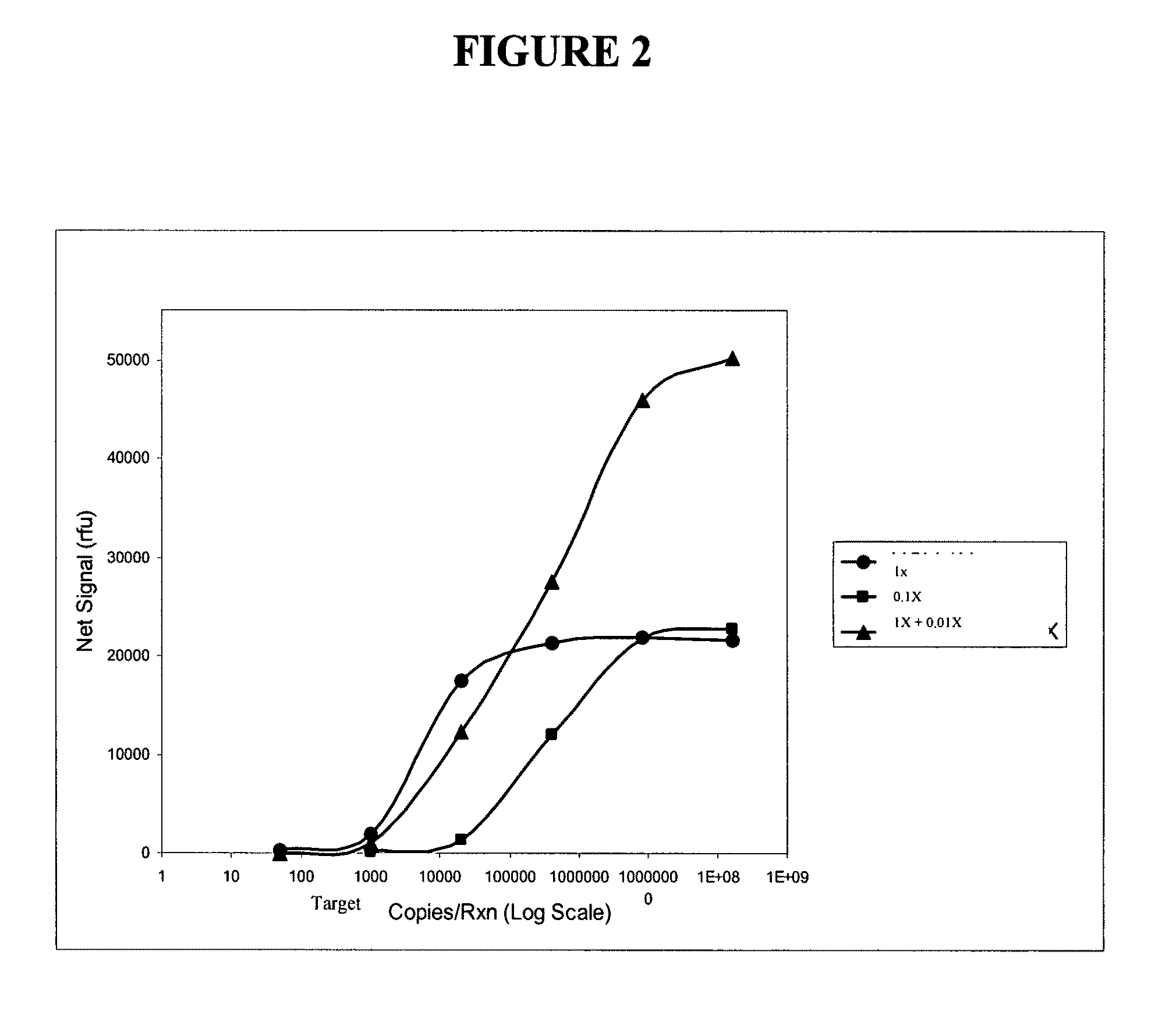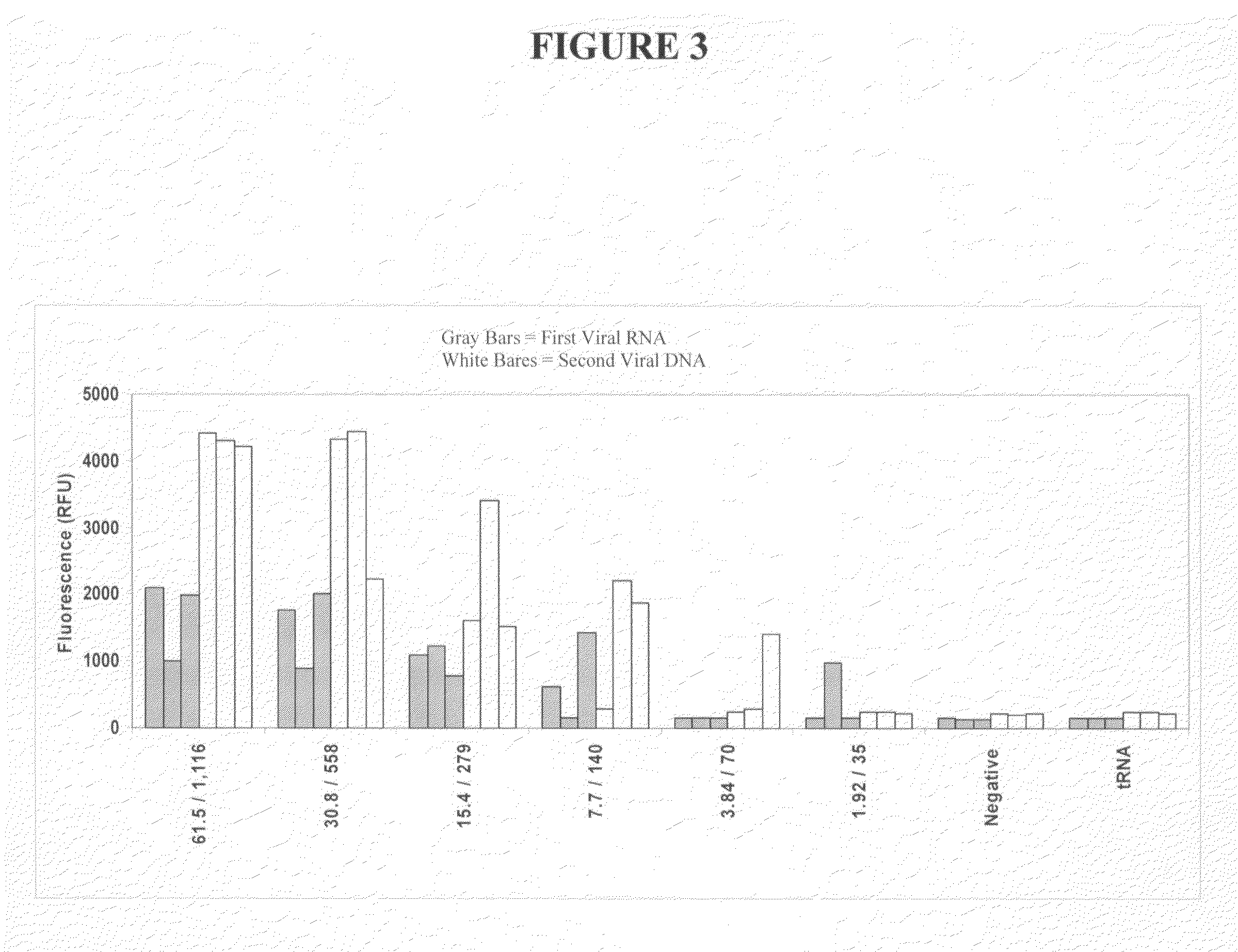T-structure invasive cleavage assays, consistent nucleic acid dispensing, and low level target nucleic acid detection
a nucleic acid and invasive technology, applied in the field of t-structure invasive cleavage assays, consistent nucleic acid dispensing, and low-level target nucleic acid detection, can solve problems such as limiting their usefulness, and achieve the effect of increasing the dynamic range of detection of viral target nucleic acid
- Summary
- Abstract
- Description
- Claims
- Application Information
AI Technical Summary
Benefits of technology
Problems solved by technology
Method used
Image
Examples
example 1
Qualitative Detection of Low Copy Numbers of Viral RNA
[0406]This example describes the qualitative detection of low copy number of viral RNA employing extended rounds of PCR and two INVADER assays that detect different parts of the viral RNA, but report to the same FRET cassette. Oligonucleotides were prepared and mixed as follows. Forward and reverse primers for a first viral target region and a second viral target region were generated, as well as forward and reverse primers for the universal internal control (UIC). All of the reverse primers were designed to also serves as INVADER oligonucleotides for their respective target regions. All of these primers were provided at a final concentration of 0.5 uM. Primary probes for the first and second viral target regions were generated, with each probe containing a 3′ portion specific for either the first or second viral target region, and 5′ flaps that were identical as designed to hybridize to a first FRET cassette (labeled with FAM) p...
example 2
Quantitative Detection of a Broad Range of Copy Numbers of Viral RNA
[0409]The following example describes the use of two probes at different concentrations that each contributes to extend the dynamic range of detection of a viral RNA target sequence using a single dye for detection. In this example, a different FRET cassette was provided to accumulate signal from each probe, but the FRET cassettes reported using the same dye.
[0410]Oligonucleotides were prepared and mixed in three different pools: “1×”, “0.01×”, and “1×+0.01×”. The following oligonucleotides were used. Forward and reverse primers for a particular viral target region were generated, as well as forward and reverse primers for the universal internal control (UIC). All of the reverse primers were designed to also serves as INVADER oligonucleotides for their respective target regions. All of these primers were provided at a final concentration of 0.5 uM. First and second primary probes were generated having identical 3′ r...
example 3
Detecting Two Different Types of Viral Nucleic Acid in Single Reaction Vessel Using Invasive Cleavage Assays that Report to Different Dyes
[0413]This Example describes detecting two different types of viral nucleic acid in a single reaction vessel using invasive cleavage assays that report different colors.
[0414]Oligonucleotides were prepared and mixed as follows. Forward and reverse primers for a first viral target RNA sequence and a second viral target DNA sequence, with the second viral target being a viral nucleic acid sequence from a different type of virus than the first viral target sequence, were generated. Both of the reverse primers were designed to also serves as INVADER oligonucleotides for their respective targets. All of these primers were provided at a final concentration of 1.0 uM. Primary probes for the first and second viral target sequences were generated, with each probe containing a 3′ portion specific for either the first or second viral target sequence, and 5′ ...
PUM
| Property | Measurement | Unit |
|---|---|---|
| Tm | aaaaa | aaaaa |
| Tm | aaaaa | aaaaa |
| Tm | aaaaa | aaaaa |
Abstract
Description
Claims
Application Information
 Login to View More
Login to View More - R&D
- Intellectual Property
- Life Sciences
- Materials
- Tech Scout
- Unparalleled Data Quality
- Higher Quality Content
- 60% Fewer Hallucinations
Browse by: Latest US Patents, China's latest patents, Technical Efficacy Thesaurus, Application Domain, Technology Topic, Popular Technical Reports.
© 2025 PatSnap. All rights reserved.Legal|Privacy policy|Modern Slavery Act Transparency Statement|Sitemap|About US| Contact US: help@patsnap.com



